Abstract
Bahia grass (Paspalum notatum) and industrial sweet potato (Ipomoea batatas) colonized by Glomus deserticola, G. etunicatum, and G. intraradices were grown in aeroponic cultures. After 12 to 14 weeks, all roots were colonized by the inoculated vesicular-arbuscular mycorrhizal fungi. Abundant vesicles and arbuscules formed in the roots, and profuse sporulation was detected intra-and extraradically. Within each fungal species, industrial sweet potato contained significantly more roots and spores per plant than bahia grass did, although the percent root colonization was similar for both hosts. Mean percent root colonization and sporulation per centimeter of colonized root generally increased with time, although with some treatments colonization declined by week 14. Spore production ranged from 4 spores per cm of colonized root for G. etunicatum to 51 spores per cm for G. intraradices. Infectivity trials with root inocula resulted in a mean of 38, 45, and 28% of bahia grass roots colonized by G. deserticola, G. etunicatum, and G. intraradices, respectively. The germination rate of G. etunicatum spores produced in soil was significantly higher than that produced in aeroponic cultures (64% versus 46%) after a 2-week incubation at 28°C. However, infectivity studies comparing G. etunicatum spores from soil and aeroponic culture indicated no biological differences between the spore sources. Aeroponically produced G. deserticola and G. etunicatum inocula retained their infectivity after cold storage (4°C) in either sterile water or moist vermiculite for at least 4 and 9 months, respectively.
Full text
PDF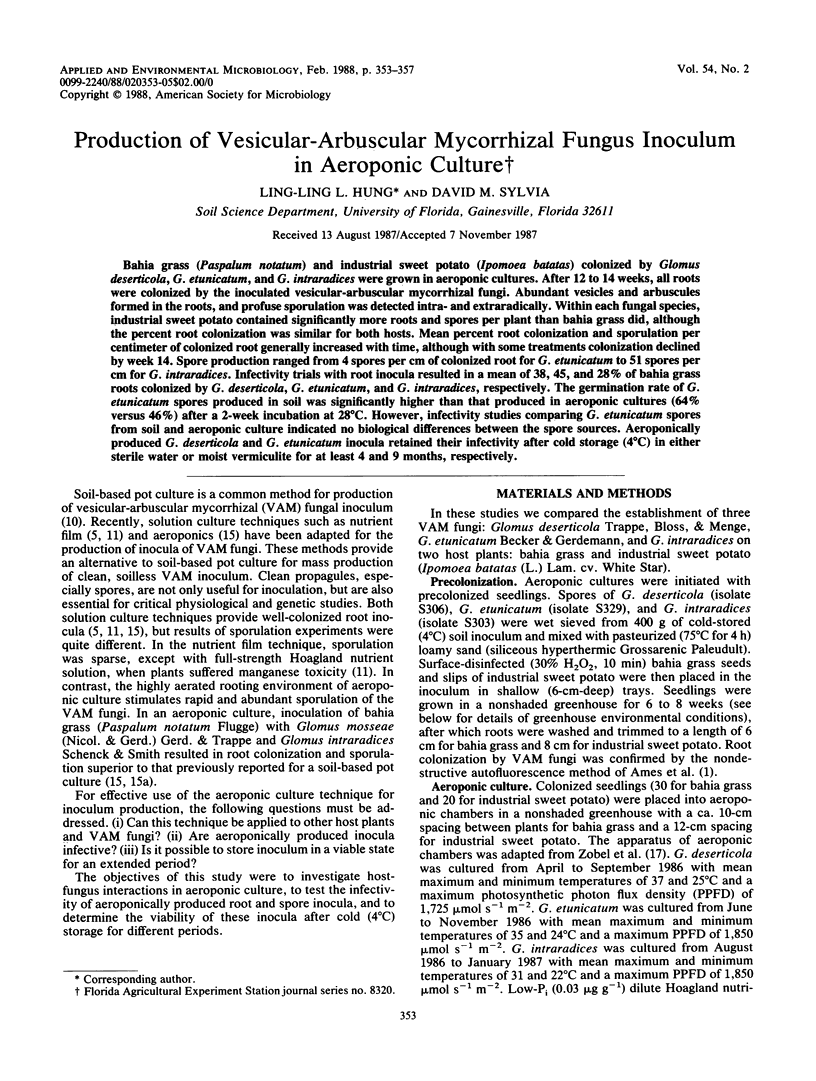
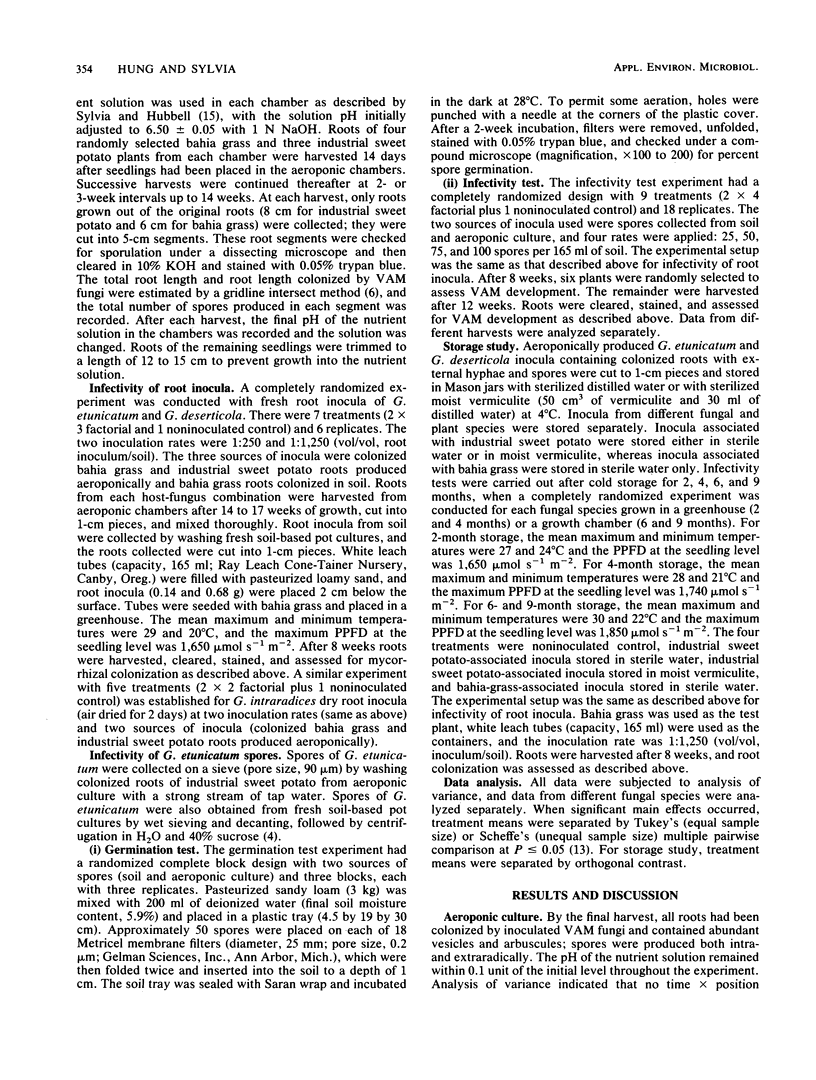
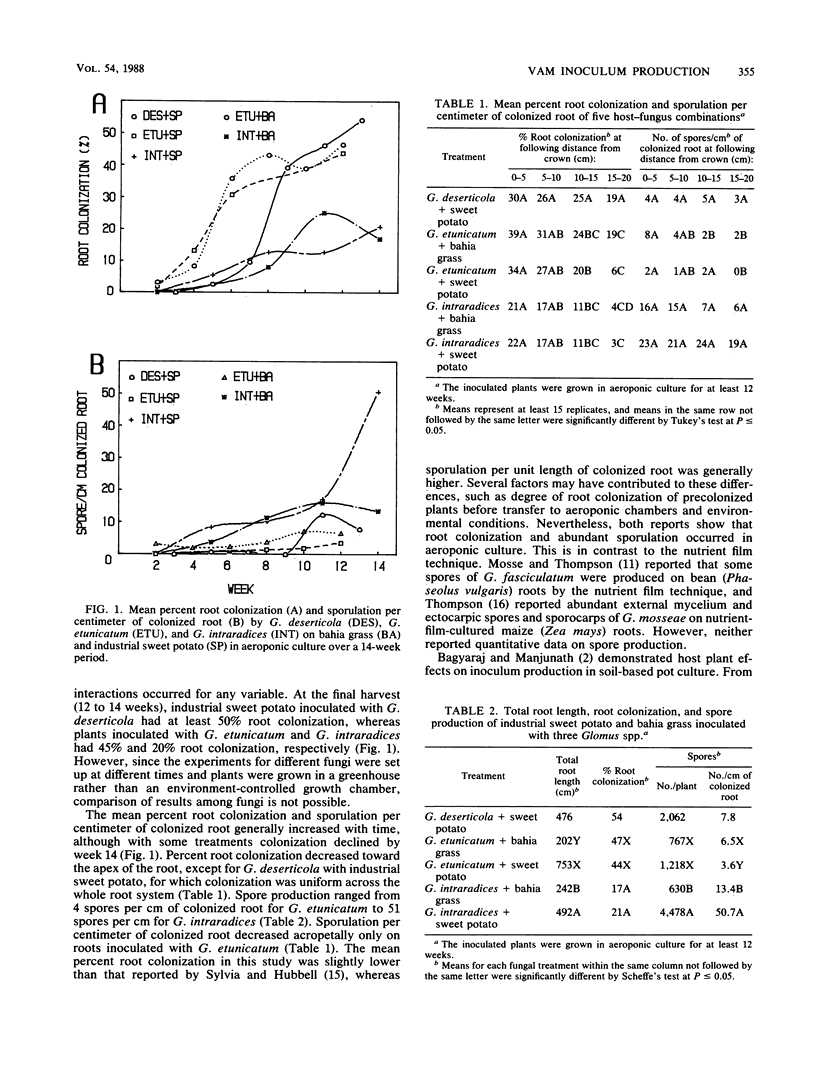
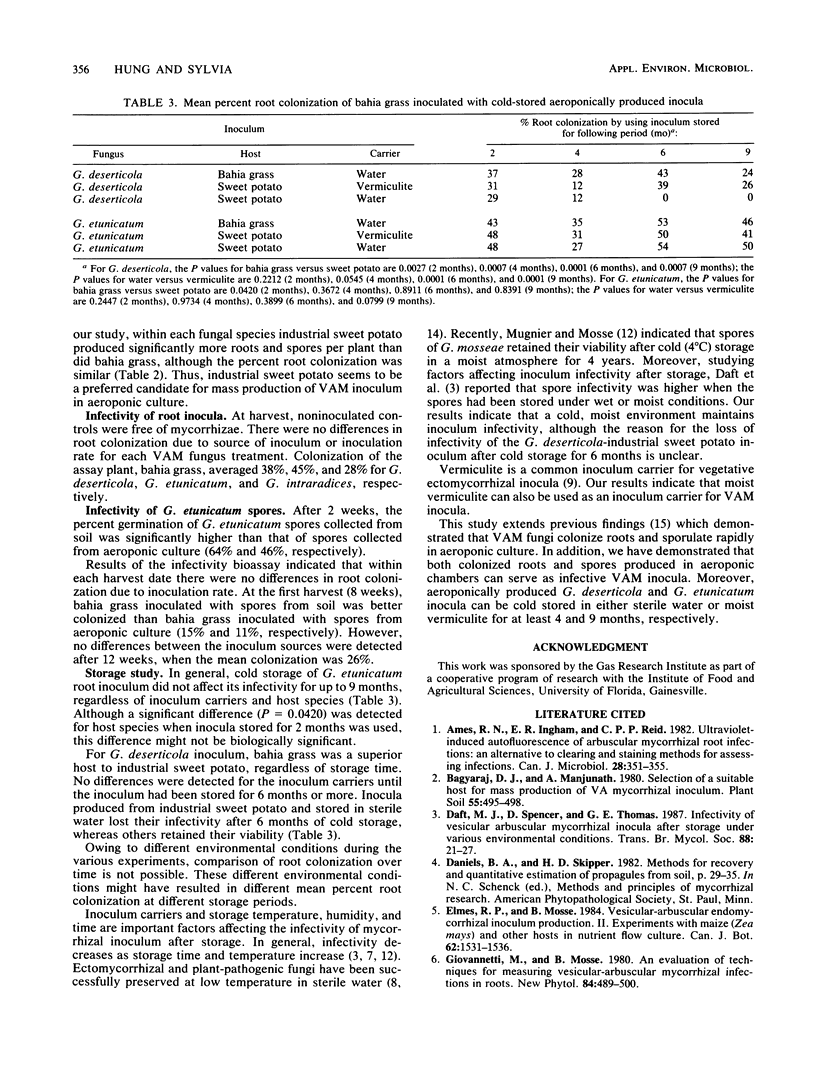
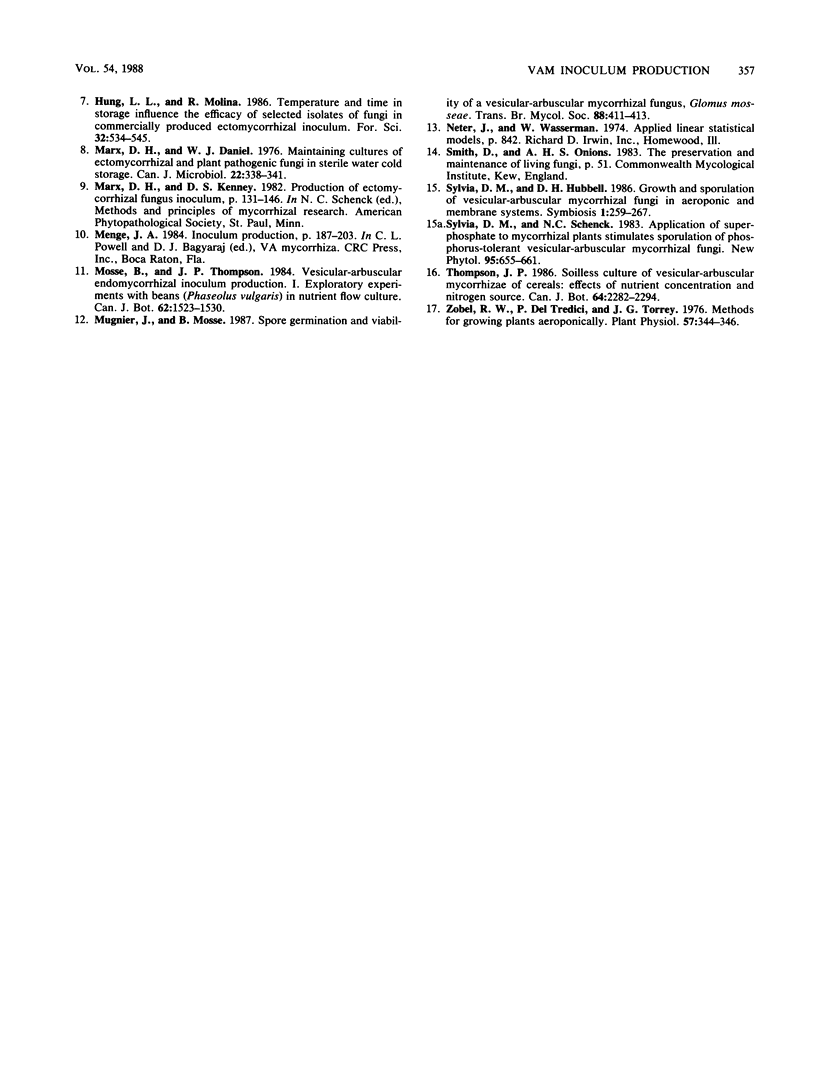
Selected References
These references are in PubMed. This may not be the complete list of references from this article.
- Marx D. H., Daniel W. J. Maintaining cultures of ectomycorrhizal and plant pathogenic fungi in sterile water cold storage. Can J Microbiol. 1976 Mar;22(3):338–341. doi: 10.1139/m76-051. [DOI] [PubMed] [Google Scholar]
- Zobel R. W., Del Tredici P., Torrey J. G. Method for growing plants aeroponically. Plant Physiol. 1976 Mar;57(3):344–346. doi: 10.1104/pp.57.3.344. [DOI] [PMC free article] [PubMed] [Google Scholar]


